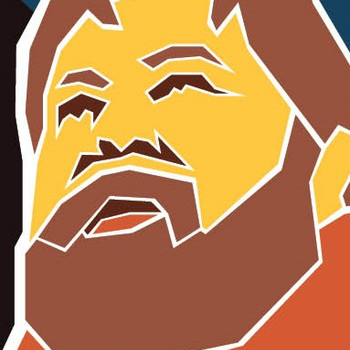We will make use of: #log_3x = lnx/ln3# and
#d/dx log_3x = d/dx(lnx/ln3) = 1/(xln3)#
Finding relative extrema
#f(x) = y=x^2 log_3x#
Note that the domain of this function is #(0,oo)#
Use the product rule to get:
#y' = 2xlog_3x + x^2 * 1/(xln3)#
# = 2xlog_3x + x/ln3#
To find critical numbers, it is convenient to use all logarithms with the same base.:
#f'(x) = y' = (2xlnx)/ln3 + x/ln3 = (x(2lnx+1))/ln3#
#y'# in never undefined in the domain, and is equal to #0# at
#x=0# or #2lnx+1=0#. #0# is not in the domain, so we need only solve:
#2lnx+1=0#.
#lnx = -1/2#
#x = e^(-1/2) = 1/sqrte#
The partitions on the domain are: #(0, e^(-1/2)), (e^(-1/2), oo)#
Testing #(0, e^(-1/2))#.
Note that #1/e < 1/ sqrte#, so #e^-1# is in the first interval and
#f'(e^(-1)) = (e^(-1)(2lne^(-1) +1))/ln3 = (1/e(-2+1))/ln3# which is negative.
So #f'# is negative on #(0, e^(-1/2))#.
Testing #(e^(-1/2), oo)#
Use #1# as the test number.
#f'(e) = (1(2ln1+1))/ln3 = (1 (0+1))/ln3# which is positive, so
So #f'# is positive on #(e^(-1/2), oo)#.
This tells us that #f(e^(-1/2)) is a relative minimum.
Finding points of inflection
Recall:
#f'(x) = y' = # = 2xlog_3x + x/ln3#
So
#f''(x) = y'' = 2log_3x +2x * 1/(xln3) +1/ln3#
# = (2lnx)/ln3 +2/ln3 + 1/ln3 = (2lnx + 3)/ln3#
The only partition number for #f''# is #lnx = -3/2# so #x = e^(-3/2)#
For #f''# the parition intervals are #(0, e^(-3/2)), (e^(-3/2), oo)#
Using #e^-2# and #1# as test numbers we will find that:
#f''# is negative on #(0, e^(-3/2))#.
#f'# is positive on #(e^(-3/2), oo)#.
The concavity does change, so
#(e^(-3/2), f(e^(-3/2)))# is a point of inflection.

